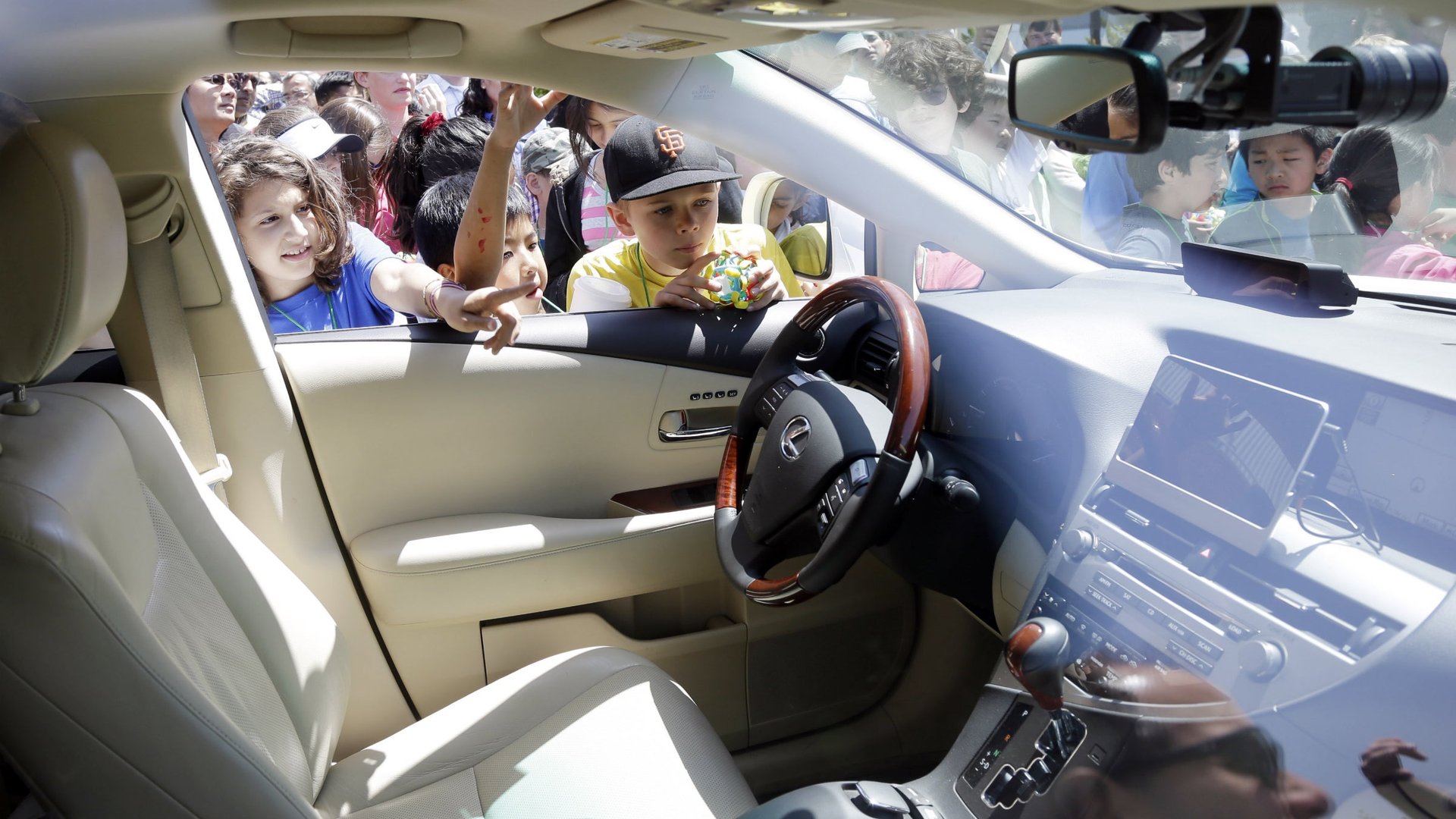A big winner in the driverless-car revolution: Television
There’s a lot of blue-sky thinking going on about the rise of robot cars. And the advent of such vehicles might not be as far off as you think. Major auto executives claim cars that can handle most of the driving themselves could be available by the end of the decade (paywall).


There’s a lot of blue-sky thinking going on about the rise of robot cars. And the advent of such vehicles might not be as far off as you think. Major auto executives claim cars that can handle most of the driving themselves could be available by the end of the decade (paywall).
It’ll be much longer before driverless cars are the norm, however. In a recent research note laying out the broad prospects for autonomous automobiles, Morgan Stanley analysts suggest it’ll take at least two decades before that happens. But if and when it does, they see media—in particular, television and video—as one of the biggest winners. The analysts write:
We estimate that fully autonomous vehicles could free up ~75 billion hours of time currently spent by drivers each year, equating to roughly 6-7 hours per week per licensed driver. Putting this into context, Veronis Suhler Stevenson (VSS) estimates the average American consumes ~65 hours of total consumer media per week, indicating a substantial increase to total media consumption is possible. Based on our analysis, we estimate autonomous vehicles could in total generate over $5 bn of new media industry revenue, with TV the largest beneficiary in total dollars, Home Video the largest beneficiary by % of market growth and Radio / Recorded Music losing share.
We’re usually suspicious of logic that seems this deceptively simple. But it’s hard to see the flaws with the reasoning here.